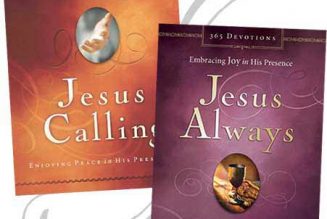
For years, when I thought about prayer, I mostly felt guilty for my lack of a robust prayer life. Reading stories of great saints praying for two hours a day or more left me with a gnawing sense of defeat. I would often resolve to pray more. But the resolves didn’t last.
One day I realized that something had changed. While not exactly satisfied with my prayer life, I knew that I had one. I’m sure that I still don’t pray as much as I should. But I pray a lot more than I used to. And I’ve tried to think about why. What changed? On one level, of course, whatever prayer life I have is the fruit of God’s grace. He gets the credit. But God uses means. The Spirit’s work doesn’t bypass our thoughts, feelings, habits, and desires. No, he works in and through all these aspects of our personhood.
When I think about my prayer life in these terms, two kinds of things bubble to the surface. On one hand, I can identify certain things that happen inside of me that often trigger prayer. I wrote about these triggers in a previous post. But I’ve also discovered several tools that help me with prayer.
1. Prayer walking
There are many biblical postures for prayer: stand, kneel, look up, head bowed, et cetera. I take this to mean that no one posture is necessary. And I have found walking to be one of the most helpful ways to pray. Here’s what I do: I walk in our church sanctuary, usually for 20-30 minutes at a time. This is where I spend the bulk of my more concentrated time in prayer.
Free tip: I also have a playlist for praying on my iPhone. It’s a selection of instrumental pieces that help me quiet my heart and focus when I’m prayer walking. The playlist helps me in two ways.
· It helps me engage emotionally. I’ve been using this list long enough that the music triggers the sense of need and dependence that I’ve often felt in prayer.
· It helps keep me on track. There are 6 tracks in my play list, totaling 28 minutes. When I’m praying, the beginning of a new track sometimes recalls my wandering mind back to prayer or signals the need to transition to a new focus in prayer (from confession to intercession for others, for example).
Better souls probably prefer total silence. I’m content to use what works for me.
2. Keep a prayer journal
Barnabas Piper recently wrote a helpful post on 5 reasons you should journal. One of those reasons is “It’s the easiest way to pray.” While it’s second on my list of tools, not first (prayer walking has helped me more), I agree that journaling can give your prayer life a boost. I’ve tried different things over the years, including writing prayers in a Moleskine journal. My current practice is to keep a prayer journal in the Notes app on my iPhone. I include the date, write down brief prayers or notes for prayer, and keep a list of needs and requests. The greatest benefit of this journal is how it helps me remember what I’ve prayed for in the past and how God has answered.
3. Index cards
Another helpful tool for prayer is to use 3×5 index cards for keeping your prayer lists. I learned this from Paul Miller’s very good book A Praying Life, perhaps the most practical book on prayer I’ve read. The idea is to keep a prayer card for each person you want to pray for. Write their name at the top of the card, then jot down some of the things you will pray for. Miller also suggests writing down a verse of Scripture to guide your prayers for these individuals. Side note: our elder team now uses prayer cards to pray for our congregation. Every family (or individual in the case of singles) has a card, on which we note ways we can be praying for them. We divide these cards up among our elders and then swap cards at a later elder’s meeting.
4. Reading the prayers of others
Reading and praying the prayers of others also helps me. The biblical basis for this is the book of Psalms, along with the prayers of Paul recorded in his letters. With Eugene Peterson, I’ve found that when I’m struggling in prayer, “a prayerbook [is] is just the thing to get me out of the brambles and underbrush of my ego, back out into the open country of the Kingdom, under the open skies of God.”[1]
Outside of Scripture, the most helpful books of prayers I’ve found are Classic Christian Prayers: A Celebration of Praise and Glory, edited by Owen Collins, and Arthur Bennett’s collection of Puritan prayers and devotions, The Valley of Vision.
5. Books on prayer
Finally, books on prayer help keep me motivated to pray. Some of my favorites include:
· Augustine’s Confessions – the whole book is a written as a prayer;
· John Owen’s Communion with the Triune God – the most profound analysis of fellowship with the Father, Son, and Spirit ever written
· E. M. Bounds’ Power through Prayer – a must read for preachers;
· David M’Intyre’s The Hiddenness of Prayer – a simple, but beautiful manual on the practice of private prayer;
· D. A. Carson’s A Call to Spiritual Reformation: Priorities from Paul and His Prayers – an insightful exposition of the prayers in Paul’s letters, sprinkled with lots of practical suggestions on how to pray;
· Paul Miller’s A Praying Life: Connecting with God in a Distracting World – a down to earth guide to cultivating prayerful dependence on the Lord, full of inspiring personal stories and useful tips on prayer.
Reading a book on prayer is not the same as praying, of course. But these books and others continue to serve believers today, by mentoring us in the practice of prayer. They serve as milestones set up by pilgrims who have traversed the path of prayer before us, markers that show us the way and beckon us onward in the pursuit of God.
Brian G. Hedges is the lead pastor for Fulkerson Park Baptist Church in Niles Michigan, and the author of several books including Active Spirituality: Grace and Effort in the Christian Life. Brian and his wife Holly have four children and live in South Bend, Indiana. Brian also blogs at www.brianghedges.com and you can follow him on Twitter @brianghedges.










